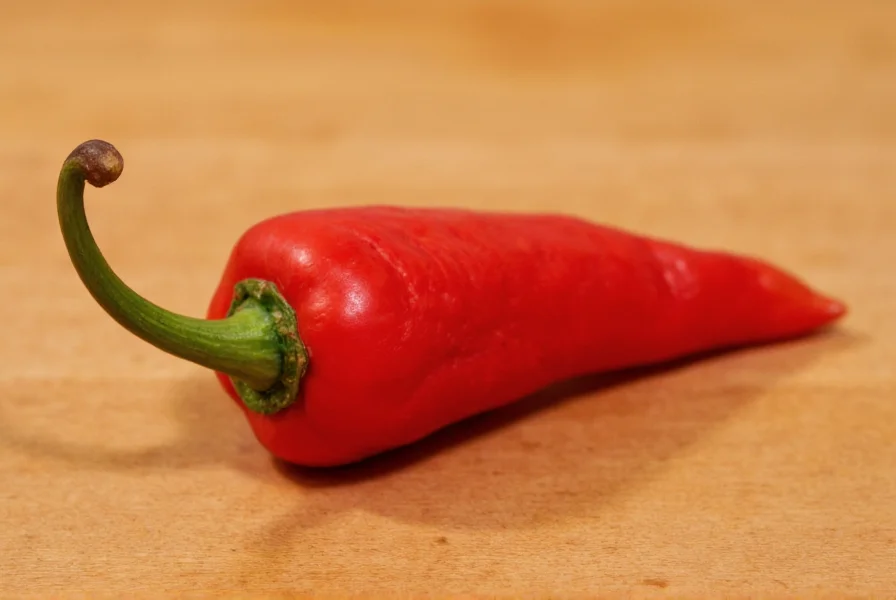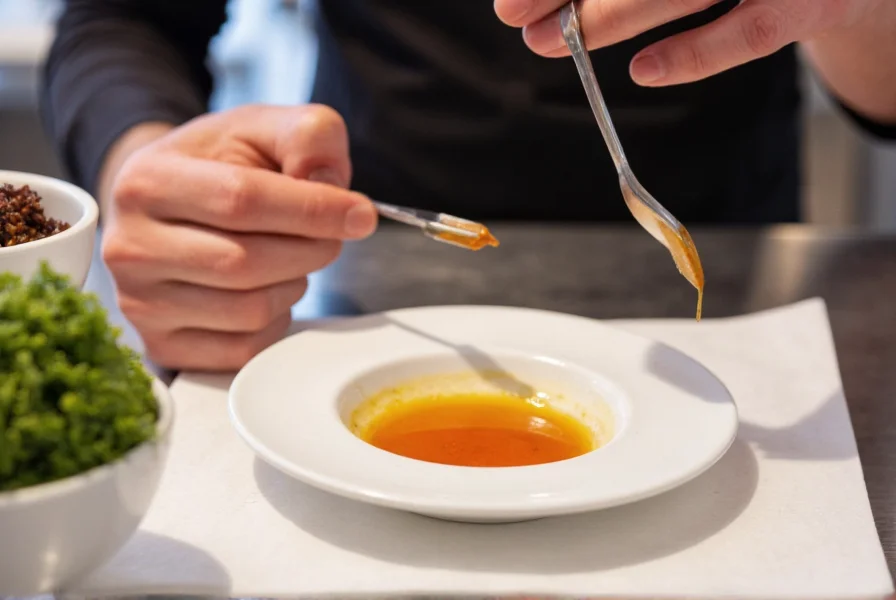The scorpion pepper has earned its fearsome reputation as one of the hottest edible peppers on Earth. Named for its stinger-like tail protrusion, this Capsicum chinense variety first gained global attention when it was certified as the world's hottest pepper by Guinness World Records in 2007, though it has since been surpassed by newer cultivars like the Carolina Reaper. Despite losing the official title, the scorpion pepper remains a formidable presence in the world of ultra-hot chilies, challenging even experienced heat seekers.
Scorpion Pepper Characteristics and Heat Measurement
Understanding the scorpion pepper requires examining its precise heat measurement and physical attributes. The original Jamaican Hot variety typically measures between 800,000-1,400,000 SHU, while the more potent Trinidad Moruga Scorpion can reach 1.2-2 million SHU. To put this in perspective:
| Pepper Variety | Scoville Heat Units | Heat Comparison |
|---|---|---|
| Scorpion Pepper | 1,200,000-2,000,000 | 20-50x hotter than habanero |
| Habanero | 100,000-350,000 | Baseline for hot peppers |
| Jalapeño | 2,500-8,000 | Mild reference point |
| Carolina Reaper | 1,400,000-2,200,000 | Slightly hotter than scorpion |
The physical appearance features a distinctive stinger-like tail, wrinkled skin, and color variations from bright red to yellow. Mature peppers measure 1.5-2 inches long with a bulbous body. The heat concentrates in the placenta (white ribs) and seeds, though capsaicinoids permeate the entire fruit.

Flavor Profile Beyond the Heat
Despite its fearsome reputation, the scorpion pepper offers a complex flavor profile that many chili enthusiasts appreciate. Before the intense heat hits (which can take 30-45 seconds to register), you'll experience:
- Fruity notes - tropical fruit flavors reminiscent of mango and apricot
- Floral undertones - subtle floral characteristics that distinguish it from other super-hots
- Sweetness - a surprising initial sweetness that quickly gives way to heat
- Earthy finish - a distinct earthiness that lingers after the heat subsides
This complexity explains why scorpion pepper culinary uses extend beyond mere heat challenges. Chefs and home cooks value it for adding depth to dishes when used judiciously.
Safe Handling and Consumption Guidelines
Working with scorpion peppers requires serious precautions. The capsaicin concentration can cause severe skin irritation, eye damage, and respiratory issues. Follow these essential scorpion pepper safety tips:
- Wear nitrile gloves (latex won't protect you) when handling
- Avoid touching your face during preparation
- Work in well-ventilated area to prevent inhaling capsaicin particles
- Use dedicated cutting boards that won't transfer oils to other foods
- Never use bare hands to adjust heat level while cooking
If you experience scorpion pepper burns, immediately wash affected areas with soap and cold water, then apply milk or yogurt. For skin exposure, rubbing alcohol can help dissolve capsaicin before washing. If ingested excessively, consume dairy products (milk, yogurt) rather than water, which spreads the oil.
Culinary Applications and Recipe Integration
The key to successful how to use scorpion pepper safely in cooking lies in moderation and proper technique. Unlike milder peppers, you typically need only a tiny portion:
- Vinegars and hot sauces - Steep whole peppers in vinegar for infused heat
- Marinades - Use sparingly in meat marinades for deep heat penetration
- Stews and braises - Add a small piece early in cooking for subtle heat infusion
- Sauces and dressings - Incorporate tiny amounts of pureed pepper
- Finishing oils - Create infused oils for controlled heat application
When developing recipes with scorpion peppers, always taste incrementally. Start with 1/8 to 1/4 of a small pepper for a dish serving 4-6 people. Remove seeds and membranes to reduce heat intensity while preserving flavor. Remember that cooking concentrates heat, so add peppers toward the end of preparation for more controlled results.

Scorpion Pepper vs Other Super-Hot Varieties
Understanding the scorpion pepper vs ghost pepper comparison helps determine which to use for specific applications:
- Ghost pepper (Bhut Jolokia) - 800,000-1,000,000 SHU with smoky, earthy flavor; heat builds gradually
- Scorpion pepper - 1,200,000-2,000,000 SHU with fruity notes; heat hits faster with sharper peak
- Carolina Reaper - 1,400,000-2,200,000 SHU with sweet initial flavor; longer heat duration
- 7 Pot Douglah - 923,889-1,853,936 SHU with chocolate undertones; more consistent heat
The scorpion pepper heat duration typically lasts 20-45 minutes, longer than ghost peppers but shorter than Carolina Reapers. This makes it suitable for dishes where you want significant heat that doesn't completely overwhelm the palate for extended periods.
Growing Scorpion Peppers at Home
For gardeners interested in cultivating these fiery peppers, scorpion pepper growing conditions require specific attention:
- Climate - Thrives in tropical/subtropical environments (USDA zones 9-11)
- Temperature - Requires consistent 75-90°F (24-32°C) for optimal growth
- Soil - Well-draining, slightly acidic soil (pH 6.0-6.8)
- Watering - Regular but not excessive; allow top inch of soil to dry between waterings
- Maturity - 90-120 days from transplant to harvest
Indoor growers should provide 12-14 hours of direct light daily. Start seeds 8-10 weeks before last frost date. The plants typically reach 3-4 feet in height and produce peppers that change from green to vibrant red as they mature. Always wear gloves when harvesting.
Responsible Consumption Practices
While many seek the scorpion pepper challenge, responsible consumption matters. The extreme heat can cause:
- Temporary loss of taste sensation
- Gastrointestinal distress
- Increased heart rate and blood pressure
- Respiratory discomfort
- Skin irritation from improper handling
Certain individuals should avoid scorpion peppers entirely, including those with gastrointestinal conditions, heart issues, or sensitivity to capsaicin. Never consume scorpion peppers raw in significant quantities - the can you eat scorpion pepper raw question has a qualified yes, but only in minuscule amounts for experienced heat consumers.
Frequently Asked Questions
How hot is a scorpion pepper compared to common peppers?
Scorpion peppers measure 1.2-2 million Scoville Heat Units (SHU), making them approximately 20-50 times hotter than habaneros (100,000-350,000 SHU) and 200-400 times hotter than jalapeños (2,500-8,000 SHU). A single scorpion pepper contains enough capsaicin to significantly heat an entire pot of chili.
What should I do if I accidentally eat too much scorpion pepper?
Immediately consume full-fat dairy products like milk, yogurt, or ice cream, as capsaicin dissolves in fat. Avoid water, which spreads the oil. For skin exposure, wash with soap and cold water, then apply rubbing alcohol before washing again. If experiencing severe symptoms like difficulty breathing or persistent pain, seek medical attention. The burning sensation typically peaks within 5-10 minutes and gradually subsides over 20-45 minutes.
Can you grow scorpion peppers in a home garden?
Yes, scorpion peppers can be grown in home gardens in USDA zones 9-11 or as container plants elsewhere. They require 90-120 days to maturity, consistent temperatures between 75-90°F (24-32°C), well-draining slightly acidic soil, and 6-8 hours of direct sunlight daily. Start seeds indoors 8-10 weeks before last frost. Always wear gloves when handling plants or harvesting peppers due to the high capsaicin concentration.
How do you safely incorporate scorpion pepper into cooking?
Always wear nitrile gloves when handling. Start with tiny amounts - 1/8 to 1/4 of a small pepper for a dish serving 4-6 people. Remove seeds and membranes to reduce heat while preserving flavor. Add toward the end of cooking for more controlled heat. Use precision tools like droppers for infused oils or purees. Never use bare hands to adjust heat levels while cooking. Store prepared peppers in clearly labeled, airtight containers away from children.
What's the difference between scorpion pepper and ghost pepper?
Scorpion peppers (1.2-2 million SHU) are significantly hotter than ghost peppers (800,000-1,000,000 SHU). Scorpion peppers deliver a faster, sharper heat peak with fruity, floral notes, while ghost peppers offer a more gradual heat build with smoky, earthy flavors. Scorpion heat typically lasts 20-45 minutes compared to ghost pepper's 15-30 minutes. The physical difference includes scorpion's distinctive stinger-like tail versus ghost pepper's more tapered end.










 浙公网安备
33010002000092号
浙公网安备
33010002000092号 浙B2-20120091-4
浙B2-20120091-4